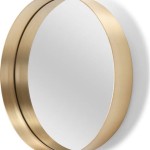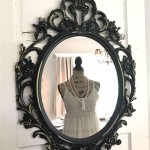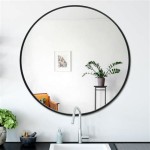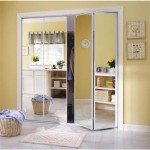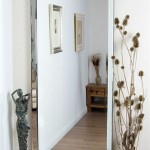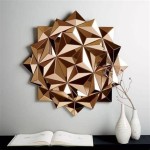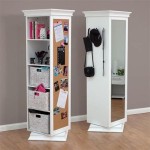How Do You Hang a Heavy Mirror on Drywall Without Studs?
Hanging a heavy mirror on drywall, especially when studs aren't readily available, can seem daunting. However, with the right tools and techniques, it can be accomplished safely and securely. This article outlines the necessary steps and considerations for achieving a sturdy and lasting installation.
Understanding the Challenge
Drywall, while convenient for interior walls, is not inherently designed to support heavy objects. Its thin, brittle nature makes it prone to tearing under significant weight. Wood studs, the vertical framing members behind the drywall, provide the necessary support. When studs aren't located where the mirror needs to be hung, alternative solutions must be employed to distribute the weight evenly and prevent damage to the wall.
Essential Tools and Materials
Before beginning, gather the following tools and materials:
- Heavy-duty drywall anchors (e.g., toggle bolts, molly bolts, or screw-in drywall anchors rated for the mirror's weight)
- Drill with appropriate drill bits
- Level
- Measuring tape
- Pencil
- Screwdriver (or drill with screwdriver bit)
- Mirror mounting hardware (D-rings, wire, etc.)
- Stud finder (optional but recommended)
- Safety glasses
Choosing the Right Drywall Anchors
The selection of appropriate drywall anchors is crucial for a secure installation. Consider the mirror's weight and the type of drywall. Toggle bolts are generally the best option for very heavy mirrors, as they provide a strong hold by expanding behind the drywall. Molly bolts are also a good choice, offering a secure grip within the drywall itself. Screw-in drywall anchors, while suitable for lighter objects, can also be used for heavier mirrors if they are rated for the appropriate weight. Always choose anchors rated for a weight significantly higher than that of the mirror.
Locating and Marking the Hanging Points
Accurate placement of the anchors is essential for a level and secure hang. First, determine the desired height for the mirror and mark the top edge on the wall with a pencil. Using a level, extend a horizontal line from this mark across the width of the mirror's intended position. Next, measure and mark the location of the mounting hardware on the back of the mirror. Transfer these measurements to the horizontal line on the wall, ensuring accurate spacing and alignment. This determines the precise points where the drywall anchors will be installed.
Installing the Drywall Anchors
Following the manufacturer's instructions for the chosen anchor type, carefully drill pilot holes at the marked locations. The size of the drill bit should correspond to the anchor specifications. Insert the anchors into the holes and secure them according to the manufacturer's guidelines. Ensure the anchors are flush with the wall surface.
Attaching the Mirror to the Anchors
Once the anchors are securely installed, carefully lift the mirror and align the mounting hardware with the anchors. If using D-rings and wire, ensure the wire is taut and securely attached to both D-rings. Slowly and carefully lower the mirror onto the anchors, ensuring proper engagement. Use a level to verify that the mirror is hanging straight. If necessary, make minor adjustments by tightening or loosening the mounting hardware.
Utilizing a French Cleat
For particularly heavy mirrors, a French cleat system offers an incredibly strong and stable hanging method. A French cleat consists of two interlocking pieces of wood, one attached to the wall and the other to the back of the mirror. The interlocking design distributes the weight evenly along the cleat, providing a robust and reliable hold. This method often requires mounting the wall portion of the cleat directly to studs, therefore enhancing the overall support and allowing for a more seamless installation, even without direct stud access behind the mirror's entire surface area.
Combining Methods for Added Security
For exceptionally heavy or large mirrors, consider combining methods for enhanced security. For instance, use a French cleat system for the primary support and add heavy-duty drywall anchors as secondary support points. This approach significantly reduces stress on any single point and ensures a secure and stable installation, preventing potential damage to the wall or the mirror itself.
How To Hang A 100 Pound Mirror On Drywall Quora

How To Hang Heavy Items Without A Stud

A Better Way To Hang Heavy Mirror Hanging Pictures

How To Hang A Large Or Heavy Mirror

How To Hang A Heavy Mirror C R F T

How To Hang Heavy Mirrors Frames Without Nails 3m

How To Hang A Heavy Mirror
How To Hang Heavy Mirror Without Studs Centered Diy Home Improvement Forum

How To Hang A Very Heavy Picture Or Mirror The Best

How To Hanging A Mirror Without Stud Heavy

